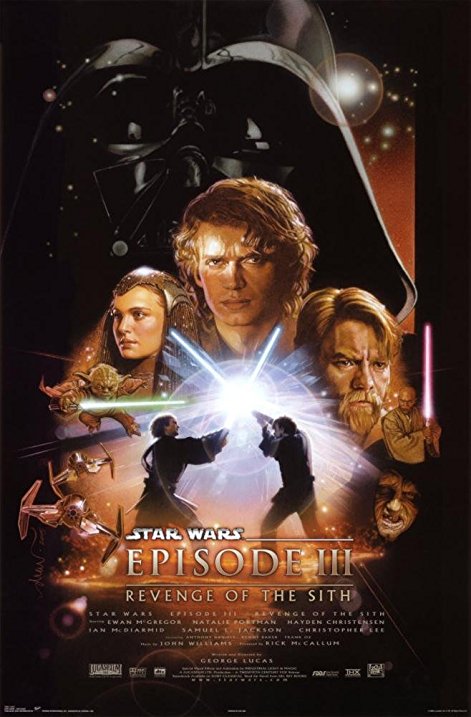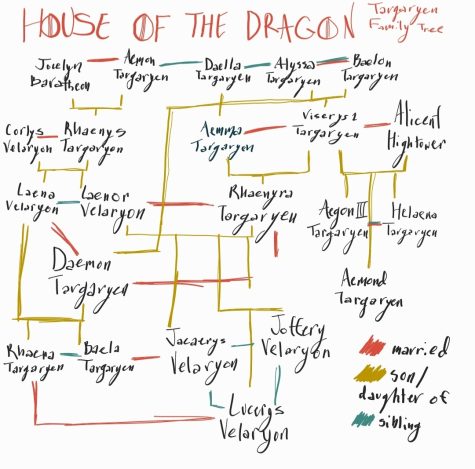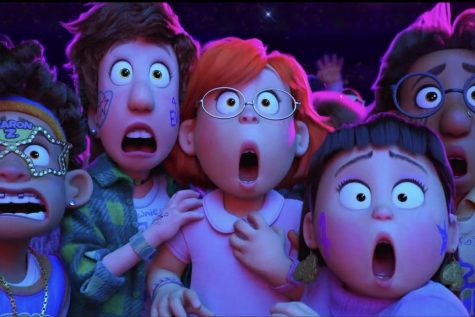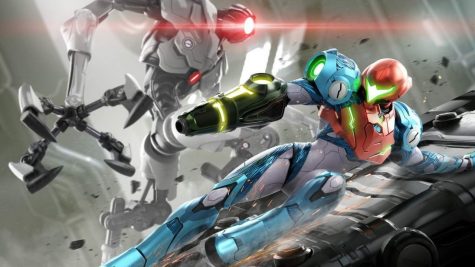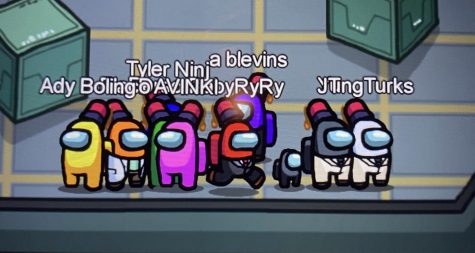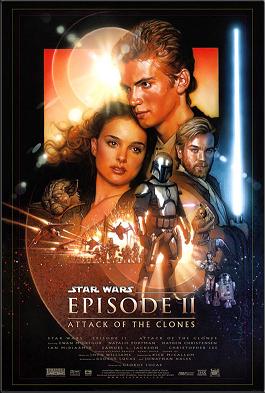Episode III: Revenge of the Sith
“So this is how liberty dies. With thunderous applause.”
According to George Lucas, the central story of Star Wars is the tragedy of Anakin Skywalker and his metamorphosis into Darth Vader. While the previous two entries in the prequel trilogy, “The Phantom Menace” and “Attack of the Clones,” established Anakin’s story and subliminally foreshadowed his fate, it is in “Revenge of the Sith” where Lucas’ intended vision is fully realized. Ever since the prequel trilogy was first announced, this is what Star Wars fans had always wanted to see: the rise of Darth Vader, arguably the greatest villain to ever come out of Hollywood.
Released on May 19, 2005, “Revenge of the Sith” is set approximately three years after the events of “Attack of the Clones,” beginning during the height of the Clone Wars. The separatists, led by former Jedi Knight Count Dooku, are pitted against the Galactic Republic in a battle for total galactic domination. The cyborg separatist droid captain General Grievous has kidnapped Sheev Palpatine, former galactic senator and incumbent supreme chancellor of the Republic. Two Jedi Knights, Anakin Skywalker and Obi Wan Kenobi, lead a dangerous rescue mission to retrieve Palpatine. Once onboard Grievous’ ship, Anakin and Obi Wan find and battle Count Dooku. With Obi Wan severely injured, Anakin is able to defeat Dooku, and later kills him at Palpatine’s pressuring compulsion. Similar to how he felt after killing a tribe of Tusken Raiders, Anakin feels remorseful about what he did, but Palpatine assures him that anger is nothing but a natural and human emotion.
Unable to defeat Grievous, who hurriedly escapes to the planet Utapau in an escape pod, Anakin, Obi Wan, and Palpatine all take control of Grievous’ ship and crash land on the planet Coruscant. Anakin and his secret wife Padmé Amidala finally reunite, but she has polarizing news for him: she is pregnant. Despite initially being excited, Anakin soon begins to have frightening nightmares of Padmé dying in childbirth.
Anakin’s nightmares are not his only problem however. The Jedi Council has recently vetoed his promotion to Jedi Master. Additionally, Master Mace Windu has prompted Anakin to spy on Palpatine, who the Jedi suspect may be hiding something from the Republic, which results in Anakin feeling anger towards the Jedi. Palpatine later tells Anakin the story of Darth Plagueis the Wise, a Sith Lord that was so powerful that he could stop people from dying. Ironically, his apprentice became more powerful than him, and killed him in his sleep. Palpatine subsequently informs Anakin that he knows of the Dark Side of the Force, and like Plagueis, he can save Padmé from dying. To Anakin’s surprise, Palpatine also reveals that he is Darth Sidious, sneakily posing as a politician in the Galactic Republic to gain power. Anakin reports this news to Jedi Master Mace Windu, who finds Palpatine and confronts him in a lightsaber duel, grotesquely changing his appearance. When Sidious is shocking Windu with his electric lightning powers, Anakin chooses to cut Windu’s hand off, and Sidious propels the Jedi Master out of a window, falling to his death. Anakin, feeling that Padmé can be saved, pledges himself to Sidious’ teachings. Sidious crowns Anakin a Sith Lord, giving him the name of Darth Vader.
Simultaneously occurring alongside Anakin’s story, Obi Wan is sent by the Jedi Council to Utapau, where Grievous is hiding. After a lightsaber duel and a chase, Obi Wan kills Grievous by burning him alive and shooting him with a laser gun. Yoda is dispatched to the Wookiee home planet Kashyyyk, where its inhabitants help defeat the separatist droid armies. Suddenly, Sidious orders all Clone troopers to kill the Jedi Knights in an act known as Order 66. The Jedi Temple on Coruscant is also raided by Vader, leading a platoon of Clone troopers. While most Jedi are killed across the galaxy, Obi Wan manages to evade Order 66 and goes back to Coruscant. Yoda also survives with the help of Wookiee general Chewbacca, and returns to Coruscant as well.
In the halls of the Jedi Temple, Obi Wan and Yoda are greeted with the sight of hundreds of corpses of Jedi Knights, some children. Obi Wan frantically wonders what has become of Anakin, but Yoda advises him that he will only find pain if he investigates any further. Nevertheless, Obi Wan searches through the Temple’s security archives, where he sees a holographic transmission of Sidious “coronating” Vader. Obi Wan then relays Anakin’s fate to Padmé, who becomes stricken with denial and grief.
Vader travels to the volcanic planet Mustafar, where he kills all of the separatist leaders. Padmé goes to Mustafar as well, but Obi Wan discreetly sneaks onboard her ship. Padmé tries to talk with her husband and sway him away from the Dark Side, but Vader angrily chokes her with the Force when he sees Obi Wan in Padmé’s ship. Vader and Obi Wan engage in a fierce lightsaber battle over the lava pits on Mustafar before Obi Wan slices Vader, who erupts in flames. Obi Wan laments to Vader how he was the Chosen One, destined to destroy the Sith and not to join them, and takes his lightsaber. Sidious eventually finds Vader, and takes him to Coruscant, where he is retrofitted with new armor, including a breathing helmet and a pair of artificial legs. Padmé then gives birth to twins, a boy named Luke and a girl named Leia. Engulfed with sadness over what has become of her husband, Padmé loses the will to live after insisting Obi Wan that there is still good in Anakin. Concerning the Skywalker twins, Leia is entrusted in the care of Senator Bail Organa, now part of a Rebellion fighting against the new Galactic Empire ruled by Sidious, and Luke is adopted by his aunt and uncle Beru and Owen Lars on Anakin’s desert home planet Tatooine, with Obi Wan watching over him.
Compared to its two predecessors, much more plot and action occurs in the third chapter of the Star Wars saga. However, there is still some political context in “Revenge of the Sith,” but it is drastically toned down in the film, which is a good thing for most viewers. While more action is a plus for most, that ultimately leads to the movie’s biggest flaw. Deduced from the summary above, the film’s storyline is somewhat choppy and congested at certain times, so much so that certain elements and plot points receive too much focus over others that are more important. For instance, the film overly dwells on Palpatine’s attempt to overthrow the Republic, while Anakin’s turn to the Dark Side is only glossed over for a few minutes. After all, in Lucas’ eyes, Anakin’s transformation into Vader is, and should be, the main focus of Star Wars. This is a key moment in not just the entire film, but in the entirety of the overall Star Wars story, and Anakin’s climactic turn takes place across about five minutes of screentime. It becomes even more apparent when Vader is shown slaughtering children (or “younglings”) in the Jedi Temple nine minutes after he is questioning Mace Windu’s murder, which in turn creates a forced and meandering tone and character shift within Anakin.
Out of all the three Star Wars prequels however, “Revenge of the Sith” is the best at telling its story to viewers visually. For most of the film, one could watch the movie on mute, and still be able to roughly follow the plot, along with how characters are feeling. In particular, there is one scene that takes place after Anakin tells Mace Windu about Palpatine and the Dark Side where Anakin and Padmé look out a window, thinking about their fates and the consequences of their actions. Aside from a line from Palpatine heard in the background, the characters’ facial expressions and John Williams’ soundtrack convey to viewers the emotions that the characters are feeling. Similar to Shmi Skywalker’s death in “Attack of the Clones,” this scene is completely silent, and it is much more powerful than characters saying how they feel and explaining the plot in an expositional manner. As a filmmaker, Lucas’ most glaring flaw is how he makes characters say how they feel. When a character says “I’m angry,” the emotion is not raw and genuine. An actor playing a character is on screen. Instead, when a character visually displays their anger by tears streaming down their face or their fists clenching, the performance seems more realistic and convincing. A character is on screen in this case, not an actor playing one.
Thankfully, and fortunately for the diverse and rather opinionated Star Wars fanbase, “Revenge of the Sith” is still an enjoyable entry in the Skywalker Family saga lineup. In vein with its fellow predecessors, the film still suffers from somewhat dull performances and writing, unconvincing special effects, and a rocky storyline, but the good trumps the bad, as it does in all the other episodic Star Wars films. As a viewer, it is easy to get involved and invested in the movie’s storyline, along with pitying characters when the unfortunate happens to them. At the end of the day, “Revenge of the Sith” is far from being a great film, but it feels like George Lucas’ dream was finally fully fulfilled with the end result. And if a filmmaker’s dream becomes fully realized the way that they first envisioned it, their formidable wish has been granted.
Hello there! Our goal is to provide relavent, engaging journalism for readers of all ages. Your donation will support the student journalists of the Wolfpacket at Claremont High School, and will allow us to purchase equipment, print our monthly issues, and enter in journalism competitions. We appreciate your consideration!

Caden Merrill is a senior at Claremont High School and it is his second year on the Wolfpacket. After serving as a reporter last year, Merrill is eager...





